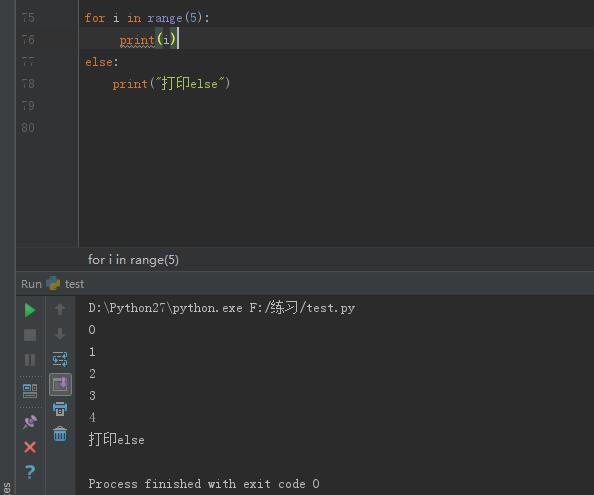不知道有没有小伙伴看到过for循环搭配else的写法?这种写法是一种比较少见的搭配,他的作用是在循环结束后执行else的代码。具体应用呢小编还没想清楚可以运用在什么地方,小伙伴们看完这篇文章可以思考并给小编留言哦!
0、背景
今天看到了一个比较诡异的写法,for后直接跟了else语句,起初还以为是没有缩进好,查询后发现果然有这种语法,特此分享。之前写过c++和Java,在for后接else还是第一次见。
1、试验
# eg1
import numpy as np
for i in np.arange(5):
print i
else:
print("hello?")
# 0
# 1
# 2
# 3
# 4
# hello?可以发现,在for正常结束后,break中的语句进行了执行。
# eg2
import numpy as np
for i in np.arange(5):
print i
if (i == 3):
break
else:
print("hello?")
# 0
# 1
# 2
# 3在这个例子当中,i==3的时候break出了循环,然后else当中的语句就没有执行。
2、总结
总结起来比较简单,如果for循环正常结束,else中语句执行。如果是break的,则不执行。
工程性代码写的比较少,暂时没有想到很好的场景,为了不对其他同学造成干扰,这种形式还是少些一点较好。
官方文档也有解释:
When the items are exhausted (which is immediately when the sequence is empty), the suite in the else clause, if present, is executed, and the loop terminates.
A break statement executed in the first suite terminates the loop without executing the else clause's suite. A continue statement executed in the first suite skips the rest of the suite and continues with the next item, or with the else clause if there was no next item.
https://docs.python.org/2/reference/compound_stmts.html#the-for-statement
补充:python里for和else的搭配
用找质数作为代码示例
for i in range(2,10):
for n in range(2,i):
if i % n == 0:
#print(i, '=', n, '*', i//n)
break
else:
print('found it %s' %i)注意:这里的 else 并不属于 if 代码块
根据官方文档的解释理解的意思:当迭代的对象迭代完并为空时,位于else的语句将会执行,而如果在for循环里有break时,则会直接终止循环,并不会执行else里的代码
写一个简单例子,用来辅助理解
for i in range(10):
if i == 7:
print('found it %s'%i)
break
else:
print('not found')可以先运行代码,看一下运行结果,然后将代码块里的break注释掉再运行一遍,与第一次运行的结果进行比较,就会发现不同
补充:python中for—else的用法,执行完for执行else
结束for循环后执行else
for i in range(5):
print(i)
else:
print("打印else")
以上就是for循环搭配else写法的全部介绍了,希望能给大家一个参考,也希望大家多多支持W3Cschool。

 免费 AI IDE
免费 AI IDE



